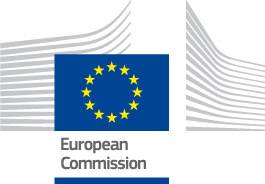The blue economy is growing fast and attracting investment worldwide. Its potential for sustainable economic growth, in line with the European Green Deal, is enormous. Unfortunately, not all economic activities at sea contribute to a healthy marine environment. A new report by the European Commission analyses why that is, and how we can turn the tide.
Press releases/news articles
A new survey invites stakeholders to take part in the prospective Blue Economy Partnership co-design process by sharing insights and suggestions on the first draft of the Strategic Research and Innovation Agenda (SRIA).
Timed to the adoption of the Commission’s new offshore renewables strategy, the latest Euronews OCEAN episode focuses on marine renewable energy.
The North-East Atlantic Fisheries Commission (NEAFC) gathered, via video conference, for its annual meeting from 10 to 13 November 2020. During the meeting, the European Union and the other NEAFC contracting parties reached agreement on a number of conservation and management measures for 2021 covering several fish stocks such as blue whiting, Atlanto-Scandian herring, redfish in Irminger Sea, Rockall haddock, blue ling, spurdog and orange roughy.
To help meet the EU's goal of climate neutrality by 2050, the European Commission today presents the EU Strategy on Offshore Renewable Energy.
The Indian Ocean Tuna Commission (IOTC) met for its 24th Session between the 2nd and 6th November 2020. The meeting was held by video-conference and with a reduced agenda focusing mainly on budgetary and administrative issues.
“The EU fish market” is a comprehensive analysis of the EU fisheries and aquaculture industry. If you want to discover more about what is produced/exported/imported, when and where, what is consumed, by whom and what the main trends are, then have a look at the EUMOFA yearly report. The publication is available in English, French, Spanish, German and Italian.
Meeting via video-conference over the past two weeks, delegations of the European Union, the Faroe Islands, Norway, Iceland, Greenland, the Russian Federation and, for the first time, the United Kingdom, reached an agreement on the management measures for blue whiting and Atlanto-Scandian herring in the North East Atlantic for 2021.
The high-level meeting on the future strategy for the Mediterranean and Black Sea took place today, under the umbrella of the FAO General Fisheries Commission for the Mediterranean (GFCM). Virginijus Sinkevičius, the European Commissioner for the Environment, Oceans and Fisheries attended the meeting, as well as the fisheries ministers of GFCM contracting parties.
From 200 m all the way down to its deepest point of 2 200 m, the Black Sea is nearly as lifeless as a foreign planet. At its surface, however, it hosts a rich and productive ecosystem providing the lifeblood of coastal communities for millennia. It is in this fertile environment that the invasive species, Rapana venosa (commonly known as rapa whelk), settled and rapidly reproduced, threatening local ecosystems through its prodigious appetite for other molluscs.
Today the Commission published its proposal setting out catch limits for fish stocks in the Atlantic and the North Sea. Based on this proposal, EU fisheries ministers will set the final catch limits at the Council on 15-16 December, to apply as of 1 January 2021.
Featured on social media: 'Oceanets' working on recycling technologies for discarded, lost, or abandoned fishing gears, 'Aqualit' a project working with the aquaculture industry to prevent litter from entering the sea, 'BlueNet' recovering fishing gear from the sea and using it as raw material to manufacture new gear, 'Fishing for litter' encouraging fishermen to take ashore the litter they encounter at sea, and 'NETtag' developing devices to track lost fishing gear.
Miquel Ferrés from Palamós, Catalonia, is a fisherman and a keen sportsman. While fishing on his trawler, he came to realise that his nets were collecting the same kind of litter that he would see on the beach during his running sessions. He decided to take action for the well-being of the seas by combining two of his great interests: doing sports and taking care of the marine environment.
Marine litter including abandoned fishing nets - also known as ghost nets - are a serious threat to marine ecosystems. In the EU, an estimated 20% of fishing gear is lost at sea, accounting for nearly a third of marine litter in European seas. The EU-funded and award-winning Redcycle project found a way to address the problem: giving old and abandoned fishing nets a new life by transforming them into high-quality fabrics to be used in technical clothing.
The EU’s common fisheries policy and the Commission’s annual proposals for fishing opportunities are based on the best available scientific evidence. Scientific advice for fisheries management relies on data, collected primarily under the data collection framework (DCF) (Regulation (EU) 2017/1004).
European maritime security has significantly improved over the last years on several dimensions including international or regional cooperation, information sharing, capability development, risk management and training.
Today the Commission has proposed total allowable catches (TAC), based on scientific advice, on three deep-sea stocks for 2021 and 2022 to allow limited fisheries.
In the EU, 20% of fishing gear is lost at sea. Abandoned, lost or disposed of, it accounts for about a third of marine litter found in European seas, or over 11,000 tons per year.
Today, the Commission and the Member States reached an agreement on the fishing opportunities in the Baltic Sea for 2021.
Today, EU Member States and the Commission have come to an agreement on the 2021 fishing opportunities in the Baltic Sea.
